Bi-Directional Power Flow in Switchgear with Static Transfer Switch Applied at Various Renewable Energies
Abstract
:1. Introduction
- A.
- A plug-in type of switchgear for AC/DC is developed. Since the topology inside the switchgear is composed of DC bus, it can be operated as a plug-in type of system, which can be used by simply connecting the converters of various distributed generations to the inverter in the developed switchgear system.
- B.
- Prototypes of the components of the proposed switchgear are developed, and the test results are presented by constructing an actual testbed.
- C.
- An intelligent electronic device (IED) is constructed to control bidirectional power flow and to collect and process related information.
2. Bidirectional Switchgear System
2.1. Overall System Configuration
2.2. AC/DC Switchgear Panel
2.3. Intelligent Electronic Device
2.4. Switchgear System Control Algorithm
3. Testbed Configuration
3.1. Static Transfer Switch
3.2. Inverter and LCL Filter in a Switchgear Panel
3.2.1. Normal Operation
3.2.2. Protective Operation
3.2.3. Protective Operation of Generator System
4. Test Result and Discussion
4.1. Test Result of Inverter Operation
4.2. Test Result of the Switchgear Panel
5. Conclusions
Author Contributions
Funding
Institutional Review Board Statement
Informed Consent Statement
Data Availability Statement
Conflicts of Interest
References
- Kim, J.H.; Kim, S.H.; Kim, J.H. Pressure Retarded Osmosis Process: Current Status and Future. J. Korean Soc. Environ. Eng. 2014, 36, 791–802. [Google Scholar]
- Kang, B.S.; Kim, J.C.; Moon, J.F.; Park, G.J.; Kweon, Y.B. Realization of the Information Visualization of Electric Power Monitoring System for MV/LV Distribution Customers. J. Korean Inst. Illum. Electr. Install. Eng. 2004, 18, 157–166. [Google Scholar]
- Jaekel, B.W. General Description and Assessment Concept for Magnetic Field Distribution Caused by Switchgear In-stallations. IEEE Trans. Power Deliv. 2007, 22, 167–177. [Google Scholar] [CrossRef]
- Treanton, B.; Palomo, J.; Kroposki, B.; Thomas, H. Advanced Power Electrics Interfaces for Distributed Energy Workshop Summary; NREL/BK-581-40480; National Renewable Energy Lab. (NREL): Golden, CO, USA, 2006. [Google Scholar] [CrossRef] [Green Version]
- Mettam, J. Insulation aging in 12kV switchger-a users perspective. In Proceeding of the 4th International Conference on Properties and Applications of Dielectric Materials, Brisbane, QLD, Australia, 3–8 July 1994; pp. 772–775. [Google Scholar]
- Okamoto, T.; Shibuya, M.; Takahashi, T.; Mizutani, Y.; Takahashi, T.; Takeda, T. Development of all solid substations. In Proceedings of the National Convention Record IEE Japan, Tokyo, Japan, 26 March 2002; p. 133. [Google Scholar]
- Shioiri, T.; Sao, J.; Ozaki, T.; Sakaguchi, O.; Kamikawaji, T.; Mjyagawa, M.; Homma, M.; Suzuki, K. Insulation technology for medium voltage solid insulated switchgear. In Proceedings of the Anual Report Conference on Electrical Insulation and Dielectric Phenomena, Albuquerque, NM, USA, 19–22 October 2003. [Google Scholar]
- Rodriguez-Diaz, E.; Vasquez, J.C.; Guerrero, J.M. Potential energy savings by using direct current for residential applications: A Danish household study case. In Proceedings of the 2017 IEEE Second International Conference on DC Microgrids, Nuremburg, Germany, 27–29 June 2017; pp. 547–552. [Google Scholar]
- Kong, X.; Yan, Z.; Guo, R.; Xu, X.; Fang, C. Three-Stage Distributed State Estimation for AC-DC Hybrid Distribution Network Under Mixed Measurement Environment. IEEE Access 2018, 6, 39027–39036. [Google Scholar] [CrossRef]
- Chakraborty, S.; Pink, C.; Kroposki, J.P.B.; Kem, G. Development of Standardized Power Electric Components, Sub-Systems and Systems for Increased Modularity and Scalability; NREL Technical Report; NREL: Golden, CO, USA, 2007. [Google Scholar]
- Lai, J.S. Power Conditioning Systems for Renewable Energies. In Proceedings of the International Conference on Electrical Machines and Systems, Seoul, Korea, 8–11 October 2007. [Google Scholar]
- Gerber, D.L.; Vossos, V.; Feng, W.; Khandekar, A.; Marnay, C.; Nordman, B. A simulation based comparison of AC and DC power distribution networks in buildings. Appl. Energy 2018, 210, 1167–1187. [Google Scholar] [CrossRef] [Green Version]
- Song, I.; Jung, W.; Kim, J.; Yun, S.; Choi, J.; Ahn, S. Operation Schemes of Smart Distribution Networks with Distributed Energy Resources for Loss Reduction and Service Restoration. IEEE Trans. Smart Grid 2013, 4, 367–374. [Google Scholar] [CrossRef]
- Park, C.W. Simulation of DC Microgrid with PV Generation. J. KIEE P 2017, 66, 267–273. [Google Scholar]
- Kroposki, B.; Lasseter, R.; Ise, T.; Morozumi, S.; Papathanassiou, S.; Hatziargyriou, N. Making microgrids work. IEEE Power Energy Mag. 2008, 6, 40–53. [Google Scholar] [CrossRef]
- Silos, Á.; Señís, A.; de Pozuelo, R.M.; Zaballos, A. Using IEC 61850 GOOSE Service for Adaptive ANSI 67/67N Protection in Ring Main Systems with Distributed Energy Resources. Energies 2017, 10, 1685. [Google Scholar] [CrossRef] [Green Version]
- Yi, Y.H.; Zhang, J.J.; Liu, B.; Xu, L.Z.; Cao, Y.J.; Guo, C.X. A new-style centralized IED based on IEC 61850. In Proceedings of the IEEE Power and Energy Society General Meeting—Conversion and Delivery of Electrical Energy in the 21st Century, Pittsburgh, PA, USA, 20–24 July 2008; pp. 1–5. [Google Scholar]
- Deng, W.; Pei, W.; Shen, Z.; Zhao, Z.; Qu, H. Adaptive Micro-Grid Operation Based on IEC 61850. Energies 2015, 8, 4455–4475. [Google Scholar] [CrossRef] [Green Version]
- Ingram, D.M.E.; Schaub, P.; Taylor, R.R.; Campbell, D.A. Performance Analysis of IEC 61850 Sampled value Process Bus Networks. IEEE Trans. Ind. Inform. 2013, 9, 1445–1454. [Google Scholar] [CrossRef]
- IEC Standard for Specific Communication Service Mapping (SCSM)—Mappings to MMS (ISO/IEC 9506-1 and ISO/IEC 9506-2) and to ISO/IEC 8802-3, 2nd ed.; IEC TC-57, IEC 61850-8-1; IEC: Geneva, Switzerland, 2011.
- Mokhtari, H.; Dewan, S.B.; Travani, M.R. Performance evaluation of thyristor based static transfer switch. IEEE Trans. Power Deliv. 2000, 15, 960–966. [Google Scholar] [CrossRef]
- Rodrigues, M.V.M.; da Silva, N.; Gonçalves, F.A.S. Static Transfer Switch Applied to Single-Phase Uninterruptible Power Supply. In Proceedings of the 2019 IEEE 15th Brazilian Power Electronics Conference and 5th IEEE Southern Power Electronics Conference (COBEP/SPEC), Santos, Brazil, 1–4 December 2019; pp. 1–6. [Google Scholar]
- Mokhtaru, H.; Travani, M.R. Effect of source phase difference on static transfer switch performance. IEEE Trans. Power Deliv. 2007, 22, 1125–1131. [Google Scholar] [CrossRef]
- Liu, F.; Xu, P.; Chen, G. Study on three-phase photovoltaic gridconnected control system with LCL filter. Acta Energae Sol. Sin. 2008, 29, 965–970. [Google Scholar]
- Teng, G.; Xiao, G.; Zhang, Z.; Qi, Y.; Lu, Y. A Single-loop Current Control Method for LCL-filtered Grid-connected Inverters Based on the Repetitive Controller. Proc. CSEE 2013, 33, 13–21. [Google Scholar]
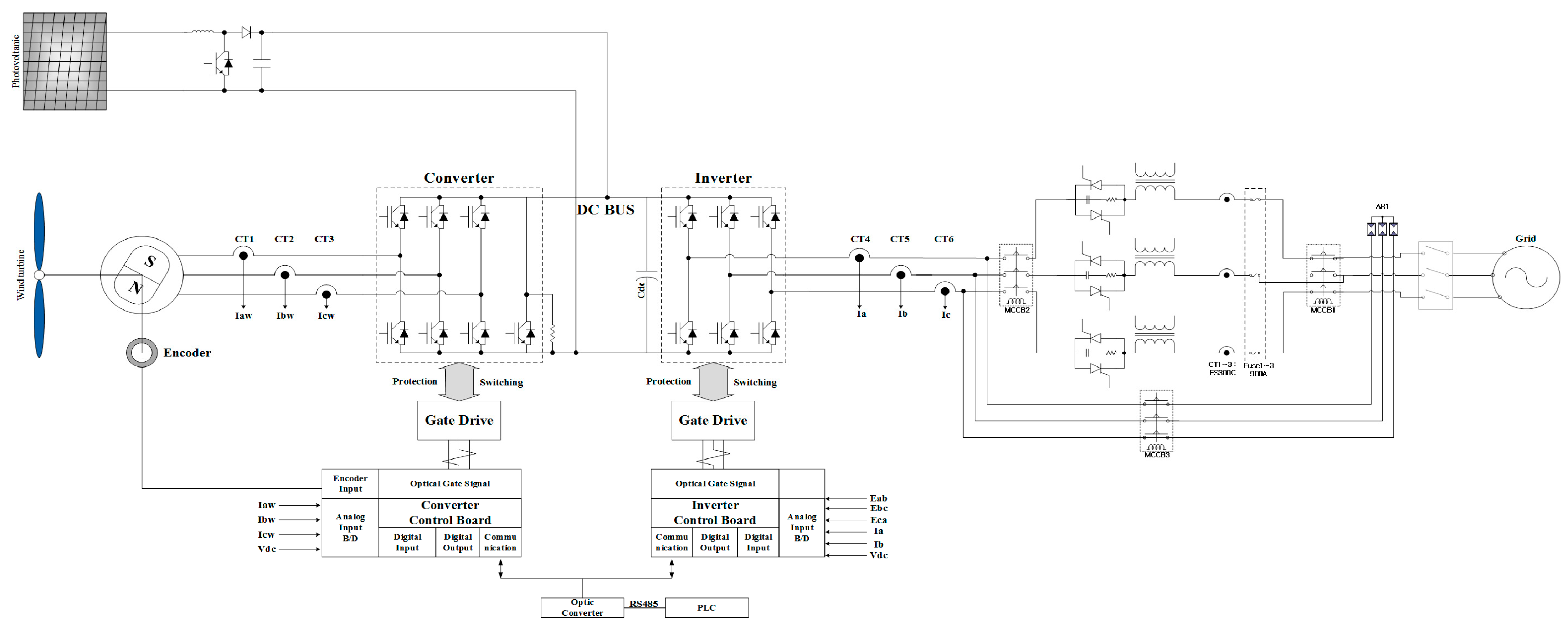

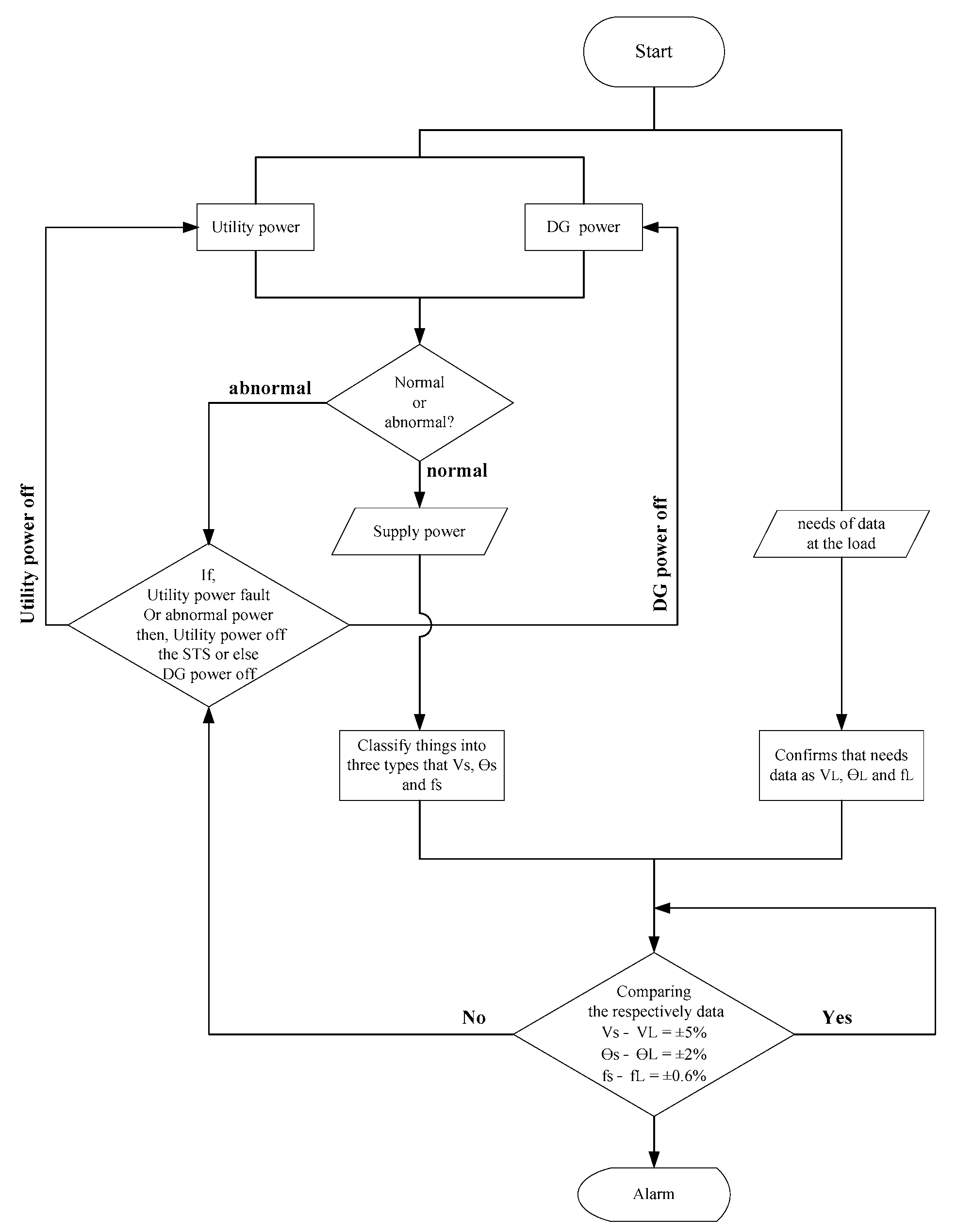
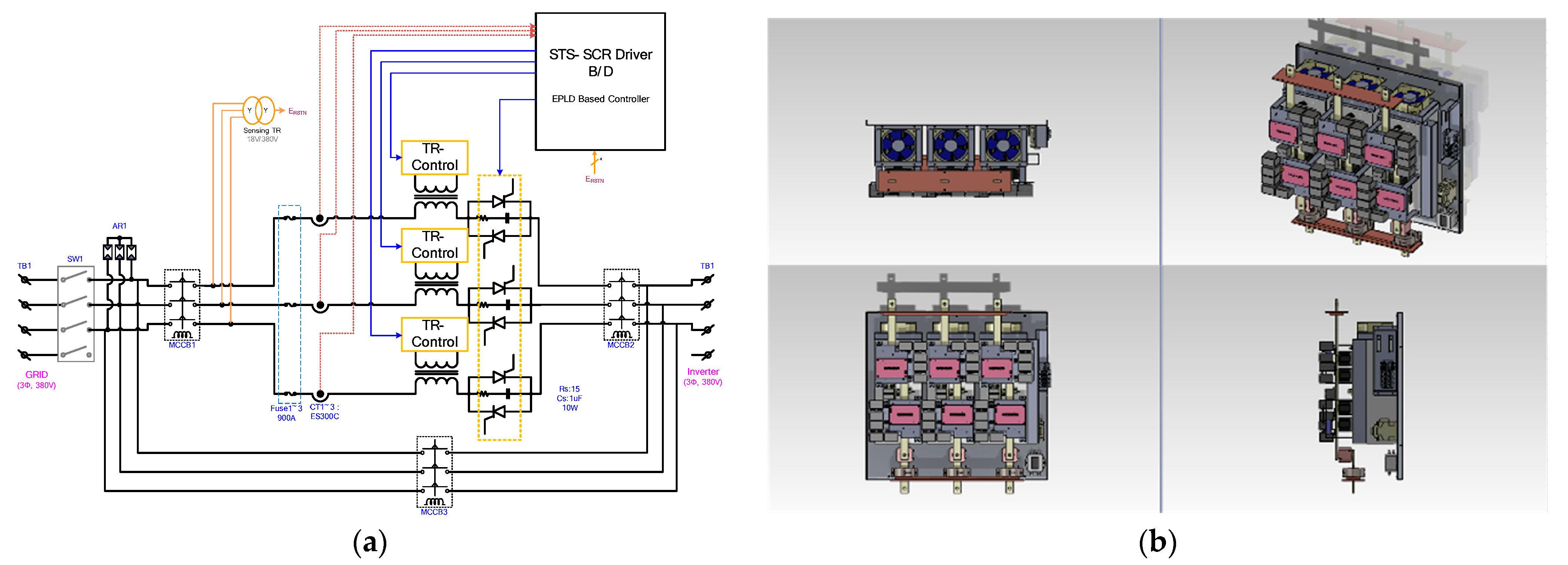

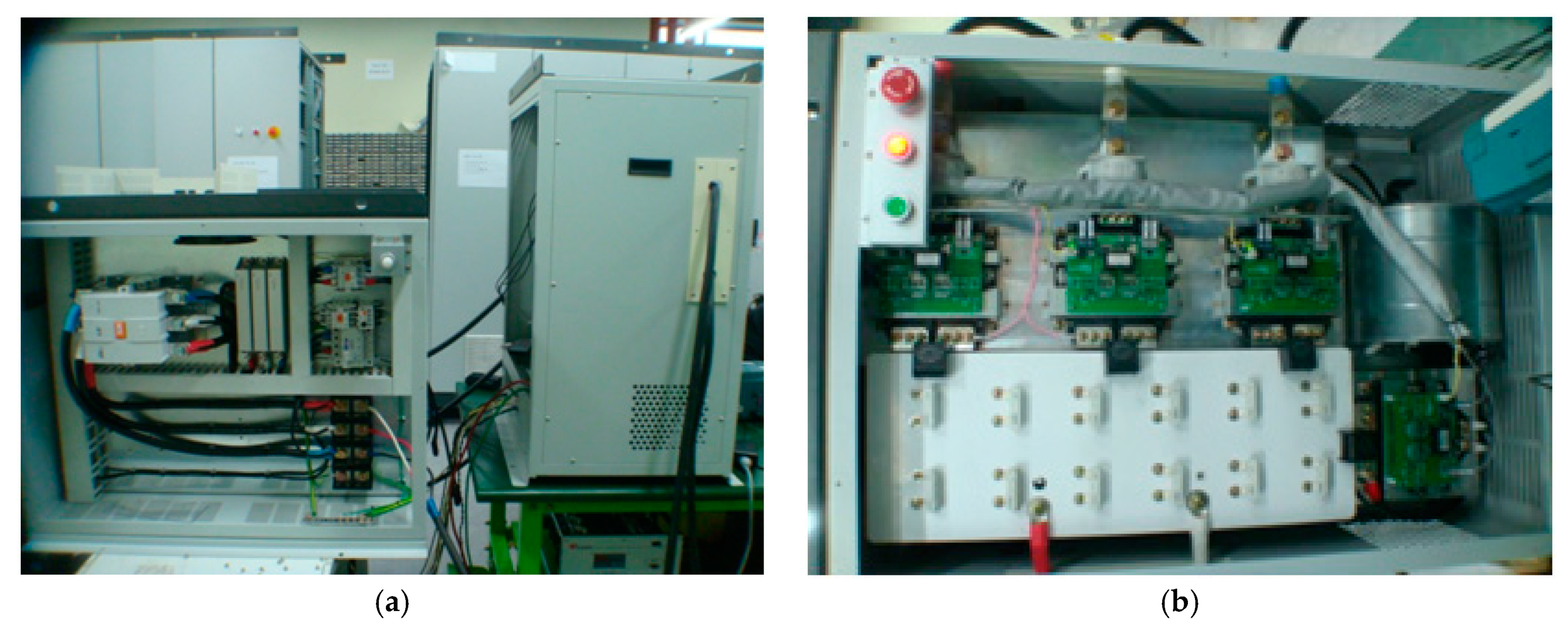
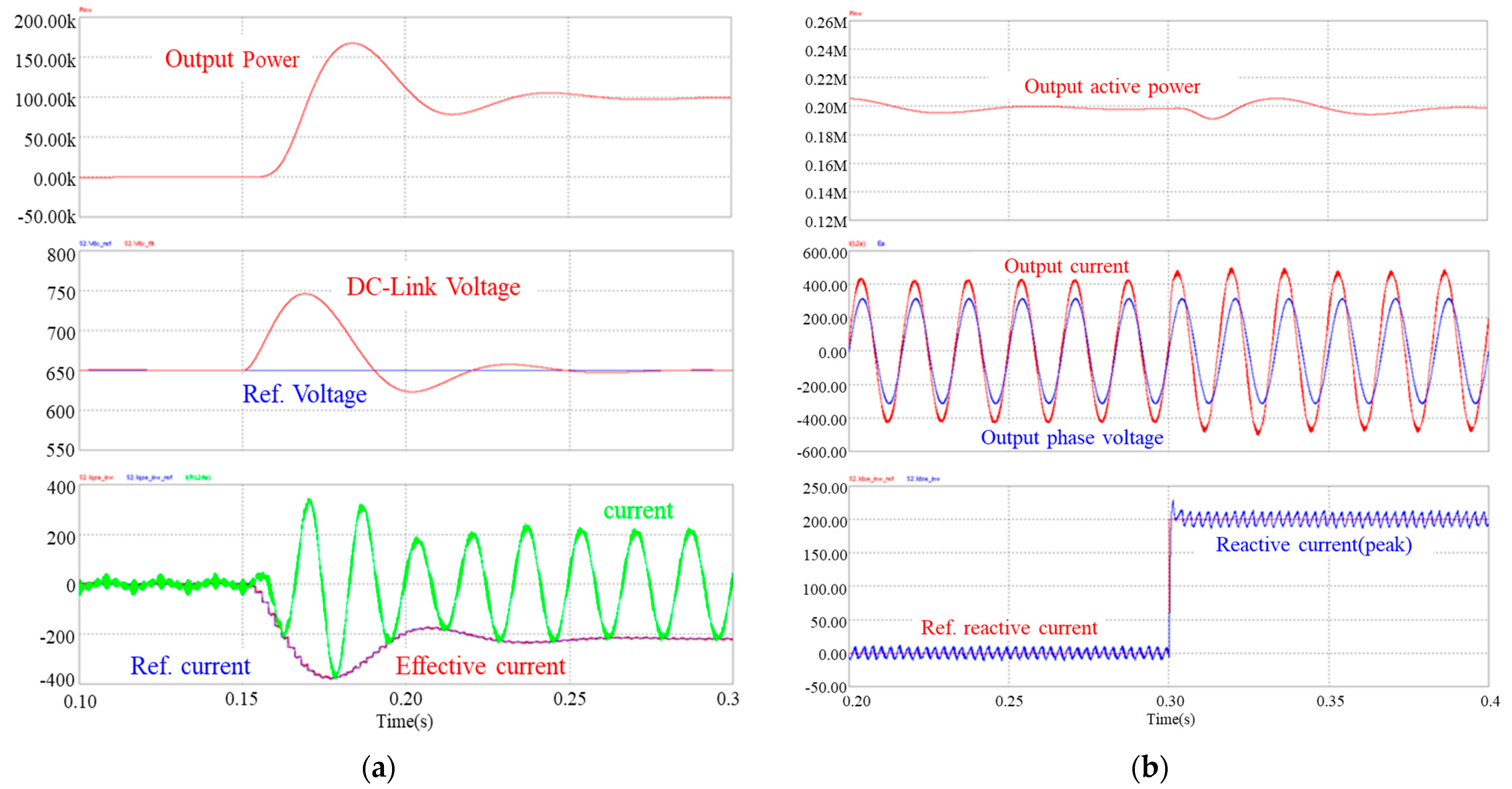
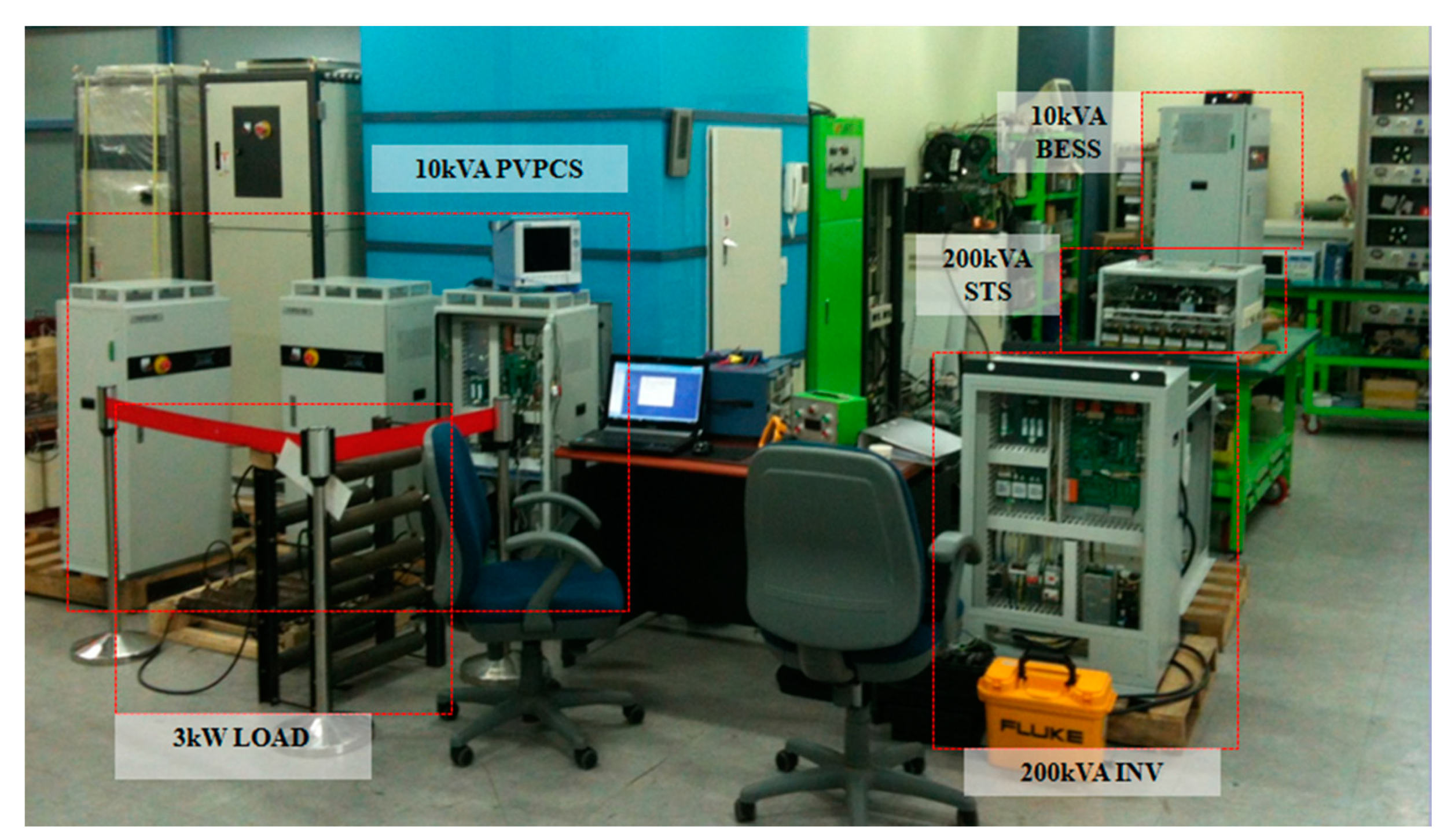
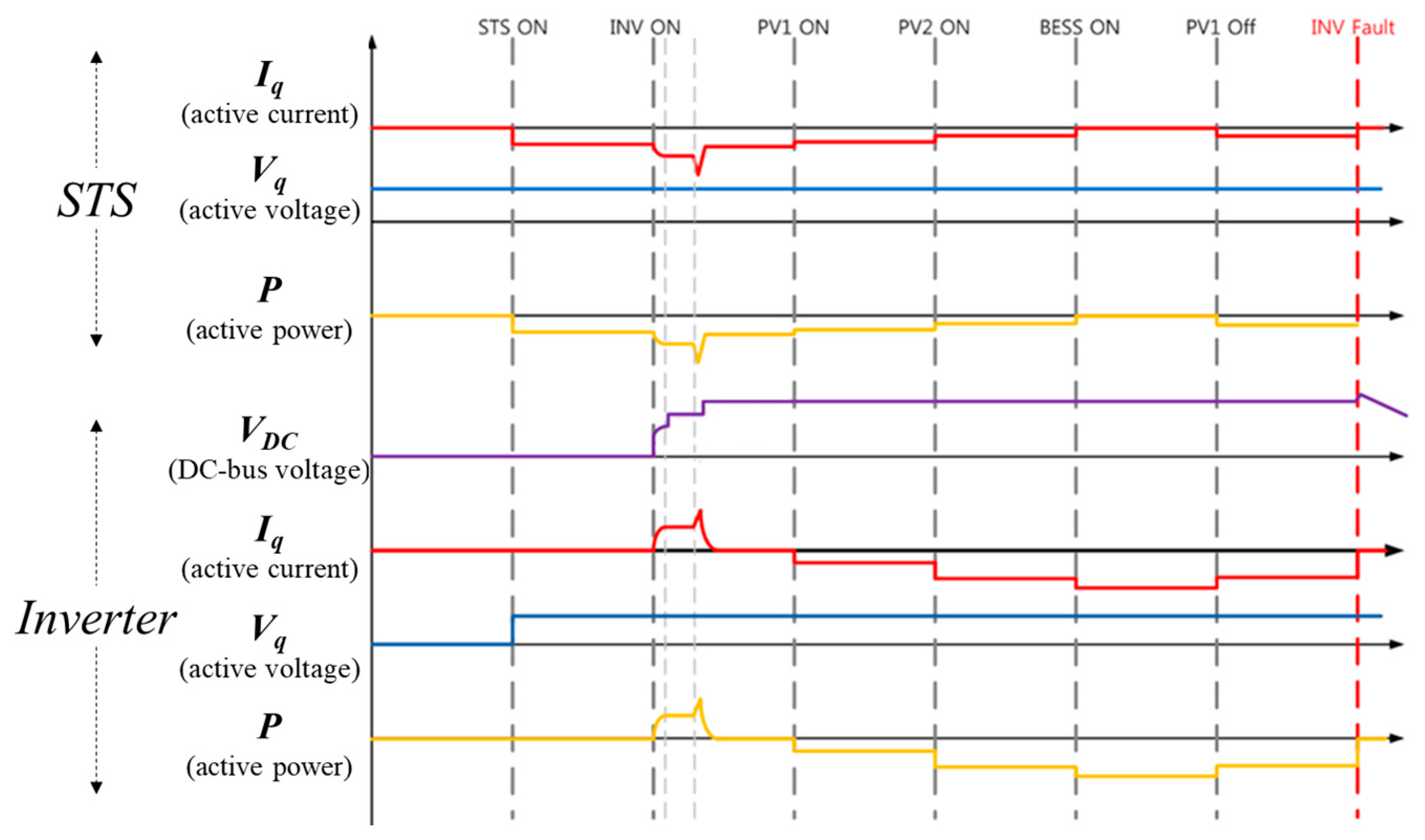

Publisher’s Note: MDPI stays neutral with regard to jurisdictional claims in published maps and institutional affiliations. |
© 2021 by the authors. Licensee MDPI, Basel, Switzerland. This article is an open access article distributed under the terms and conditions of the Creative Commons Attribution (CC BY) license (https://creativecommons.org/licenses/by/4.0/).
Share and Cite
Park, K.-W.; Kim, C.-H. Bi-Directional Power Flow in Switchgear with Static Transfer Switch Applied at Various Renewable Energies. Energies 2021, 14, 3187. https://doi.org/10.3390/en14113187
Park K-W, Kim C-H. Bi-Directional Power Flow in Switchgear with Static Transfer Switch Applied at Various Renewable Energies. Energies. 2021; 14(11):3187. https://doi.org/10.3390/en14113187
Chicago/Turabian StylePark, Keon-Woo, and Chul-Hwan Kim. 2021. "Bi-Directional Power Flow in Switchgear with Static Transfer Switch Applied at Various Renewable Energies" Energies 14, no. 11: 3187. https://doi.org/10.3390/en14113187





